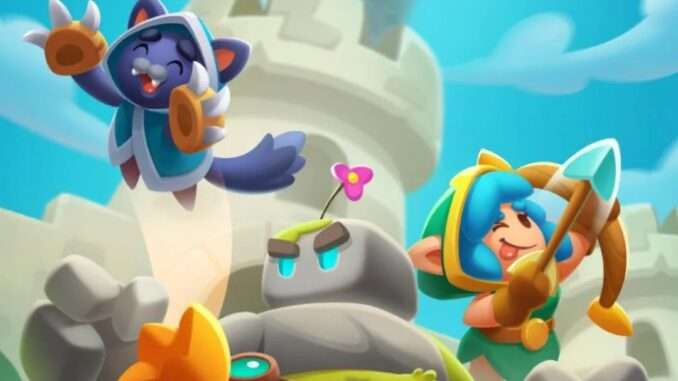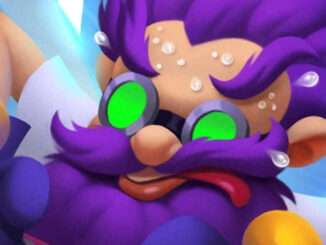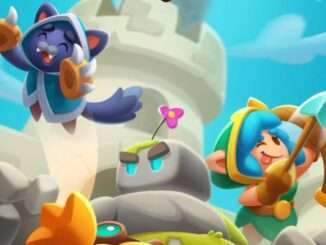
Trinity and Crowd Control
By Madelyn Aurora
Foreword
In many games we have heard of something like tanks, dps, and support most often healers. This is called the holy trinity as you need one of each to succeed in a battle.
A tank is there to tank up as many hits as possible allowing the dpsers to fight. The support or healers are there to help your tanks survive longer and help the dpsers survive if anything gets through.
But what if I tell you there is actually a fourth, fifth and sixth type. Which can be classified as support but is still different.
Crowd Control
You can call the fourth type control or crowd management. In general a tank has interactions with enemies and or self.
- Enemies -> Tank. Whereas a dpser goes from Dpser -> Enemies.
But support more often then not go from:
- Support -> Ally.
In this case think of healing, attack speed boosts, preventing from dying, shields but also damage boosts and revival.
Although there is nothing that prevents Support to go to Enemy. Like debuffs, think of weakness (more damage done to specific targets), fear (enemy runs around uncontrollably), madness (enemies attack nearest hero even allies but can’tuse abilities), stun (hero can’t move or fight), sleep (hero can’t move or fight or regain energy).
There are however also three more ways to interact namely:
- Hero -> environment
- Hero -> crowd
- Hero -> summon.
We have hero to environment with perks were certain areas deal damage on the board or get special buffs and debuffs. Whereas the hero to crowd can be seen as crowd management. Think of controlling what the crowd does (the control category) in here you can think of buffs like charm (enemy fights temporarily for your side), crowd gets thrown back to their side. Or taunt where the crowd is forced to attack a specific target without the chance to activate abilities.
Finally we have the summoner category. This is a special category with not so many heroes. But the heroes who do summon are really strong as they have unlimited potential. Mainly due to them being able to replenish your death armies or even create a bigger one. The downside of summoners often is that they have one weakness in a way or form. It can be slow attack speed, can be low health. Or low attack or all of them. That being said never underestimate a summoner.
Why does this theory matter? Well it gives some inside in what to expect in a good and balanced fight and which categories exist. Ofcourse a hero can be part of multiple categories but more often then not one who does one thing best is considered better in that area. Sadly this isn’t always true since some heroes mainly astrals can perform 2 or even 3 categories at the same time. In the next message I will explain some deck strategies based on these insights.
As said before in a balanced deck you have support, dps and tanks. The dpser is meant to kill enemies and therefore should be standing safe behind the tanks. The same can be said about most support units. Although there are some exceptions like kitsune with energy drain and energy silence. Who goes to close combat with it. Her weakness however is that she can get easily killed on her own.
So you need to create a diversion through a unit who can jump to certain heroes to take their attention. Think of griffon, nightmare, monkey king or fencer. These units are often so called disrupters. And or assassins of the backline who can easily kill a dpser or support. Yet they can also help make your dpsers and support survive due to taking some hits and dealing massive damage and or effects to some enemies.
You generally want 1 disruptor in your deck when you fight a dps or support heavy deck, but also when you run close combat support type units.
Griffon is probably the most known disruptor due to his insane damage potential to a single target.

Control Effects
Control effects are effects like fear, stun, madness, charm and sleep.
But in some decks griffon will be replaced for a disruptor that isn’t an assassin but can do wild area damage. More when units are closely packed think of nightmare for example. Who gains +18% strength for every unit he hit at once with that ability. Or for every other enemy that has fear due to other units.

To recap, disruptors often times called assassins but not always fitting. Are a semi support type unit if used in the right setting to make sure that your real supports and dpsers stay alive. Yet they have also the potential to disrupt the other person’s backline by removing one or two essential units. Making their strategy fall apart.
Most pro decks will look like this and follow the following pattern. 1 or 2 tanks, 2 or 1 dpsers, 1 support (rarely but it’s seen 2 support), 1 disruptor.
Sometimes they switch one of the double types for a control class unit or summoner. Depending on the deck.





Be the first to comment